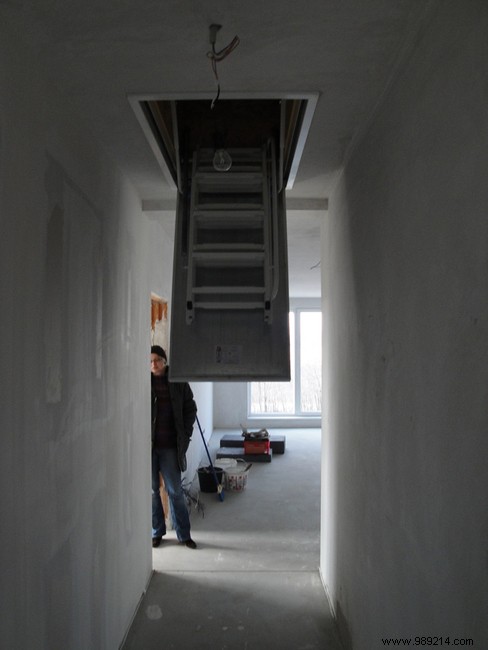
Nowadays, most constructions are made up of false ceilings. However, it is often necessary to have access to the attic located above. Therefore, the installation of an inspection hatch in the ceiling is essential. An inspection hatch is, in fact, an opening in the ceiling allowing access to the spaces under the roof. What are its true attributes?
Consisting of a detachable panel and a fixed border, the inspection hatch makes it possible to carry out checks and possible repairs of the technical arrangements of a habitat. It allows access to attics and storage areas. It also simplifies access to electrical connections, wires, cables and any other equipment that may require troubleshooting.
This door is almost invisible, because it is covered with the same material as the ceiling, that is to say either in wood, PVC or placo. Its size must absolutely allow the introduction of a person.
A ceiling inspection hatch must be perfectly thermally insulated. It must also be airtight. These conditions are essential so that it is not a source of heat leakage. Its implementation goes through several stages.
First, you have to determine the ideal location where it can be installed. Since it is not really aesthetic and can generate air passages, it is preferable to place it in storage or clearance spaces such as a laundry room, storage room or hallway, since these places do not require a lot of heat unlike the bathroom for example, and they are not living rooms such as the kitchen, living room or bedrooms. The most important thing is that it is accessible using a ladder from the ground.
Once the appropriate place has been found, it is necessary to trace the planned cutout of its entrance. This can be done with a simple square, a ruler and a pencil. Keeping this line and using a keyhole saw, the cutting of the plaster can now be done. However, to facilitate the insertion of the saw, it is necessary to make a pilot hole.
The next phase is to remove the frame from the hatch and attach edging around the opening. It is essential that these borders fit snugly inside the false ceiling.
Fasteners or stops must be added to secure the inspection hatch. Only these small hooks and a thin void will be visible. More elaborate ceiling hatches squarely integrate the access ladder.
(photo rakamblack - CC BY-SA 2.0)